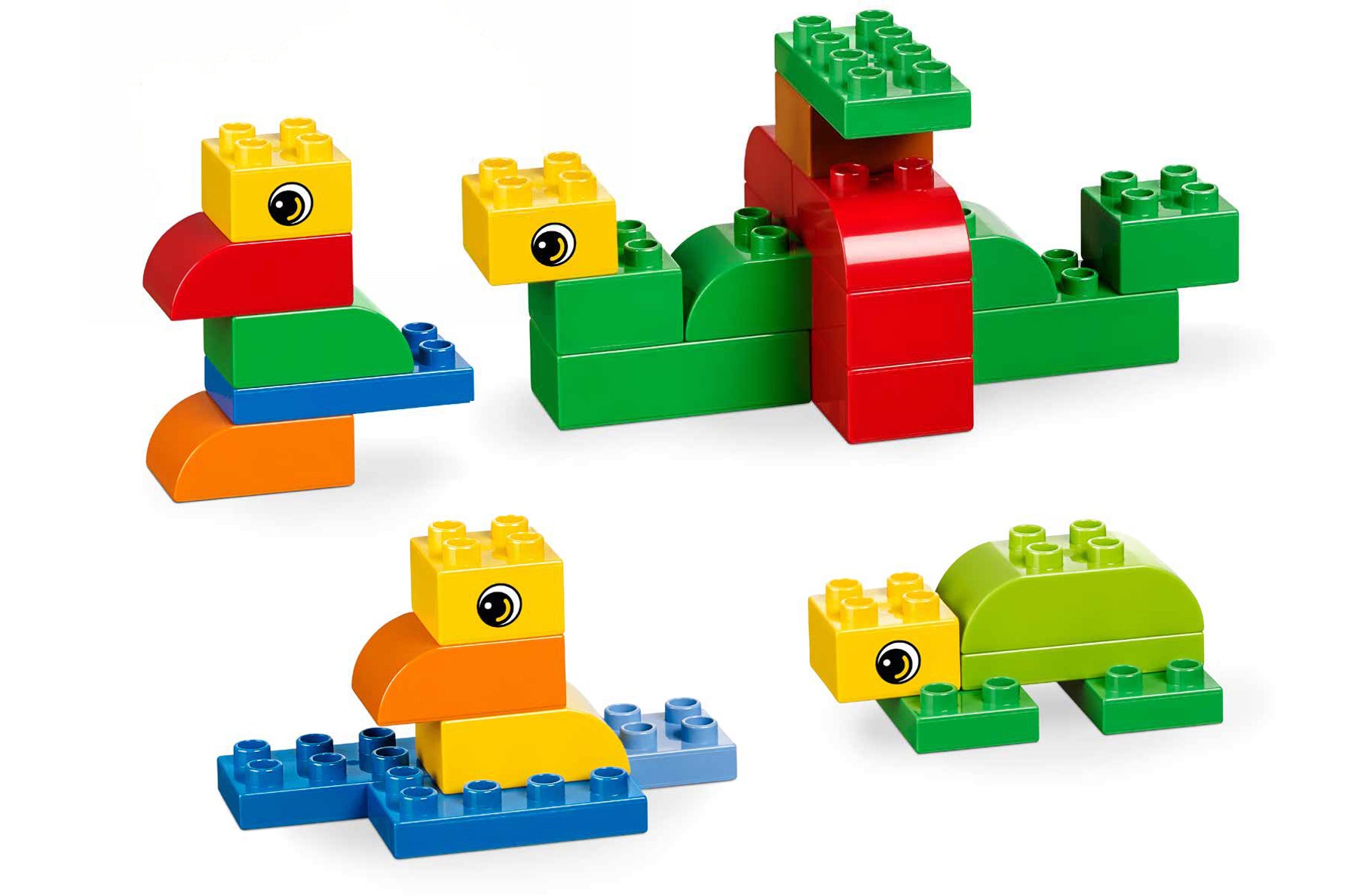My Pet
Learn about what pets need and be able to express thoughts, ideas and opinions.

Connect
- Show the children the image of various animals (see the activity card below) and ask them to describe what they see.

Prompt a discussion about the needs of animals. Consider asking questions like:
- What do these animals need to eat?
- What do these animals need to drink?
- What do these animals need to keep them safe and warm?
Tell the children that when people have pets, they are responsible for taking care of them. Explain that this includes making sure the pets have food, water, and shelter, and also making sure the pets get exercise, attention, baths, check-ups by the veterinarian, and medicine when they are sick.
- Ask the children to imagine what it would be like to have one of the animals in the picture as a pet.
Construct
- Ask the children to choose an animal to be their pet.
- Encourage them to build a scene for their pet that includes everything the pet needs. Remind the children that they should pick a setting that is appropriate for their animal (e.g., a dog may live in a house, but a duck would need to live outside.)
- Activity tip: If the children have difficulty thinking of items to build for their pet, start by asking what the pet would eat.
Contemplate
When the children have finished building, ask them to share what they have built for their pet. Consider asking questions like:
- Which animal did you choose as a pet?
- What does your pet need?
Continue
- Tell the children that when people go on vacation, they need someone to watch their pet and that this person is called a pet sitter.
- Ask the children to create instructions for how to take care of their pet while they are away.
- Encourage them to role-play the pet owner demonstrating the instructions to the pet sitter.
Did you notice?
Ask guiding questions to elicit students’ thinking and their decisions while ideating.
Observation Checklist
Review the learning objectives and educational standards addressed in this lesson (Teacher Support box).
Share specific student responses and behaviors at different levels of mastery.
Use the following checklist to observe students’ progress:
- Students are able to express their thoughts, ideas, and opinions to others.
- Students are able to understand the fundamental narrative structure and elements.
교사 지원
Children will:
- Describe what pets need
- Give simple instructions
For up to 6 children.
- Children are able to express their thoughts, ideas, and opinions to others.
- Children are able to describe things and events.




